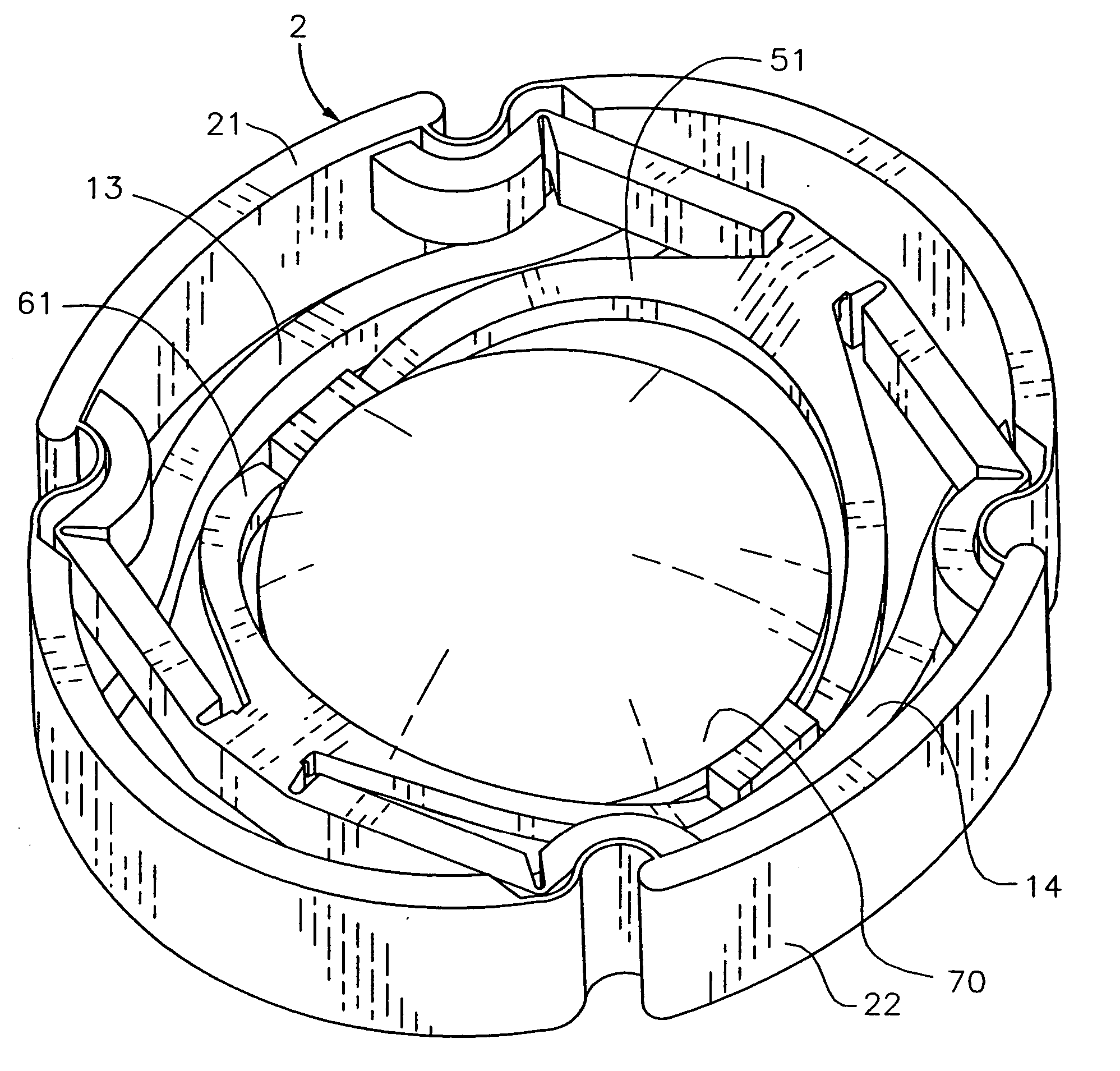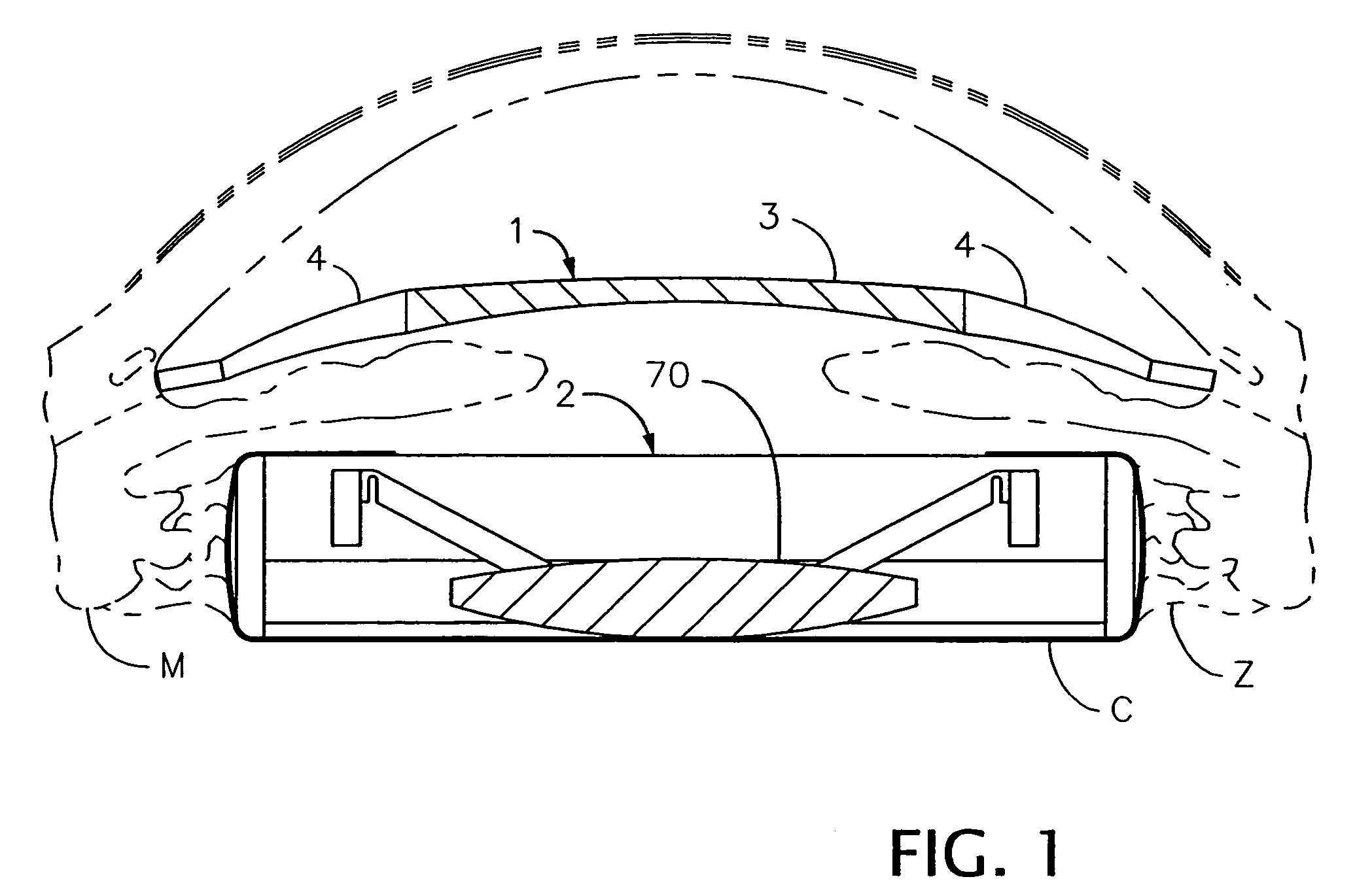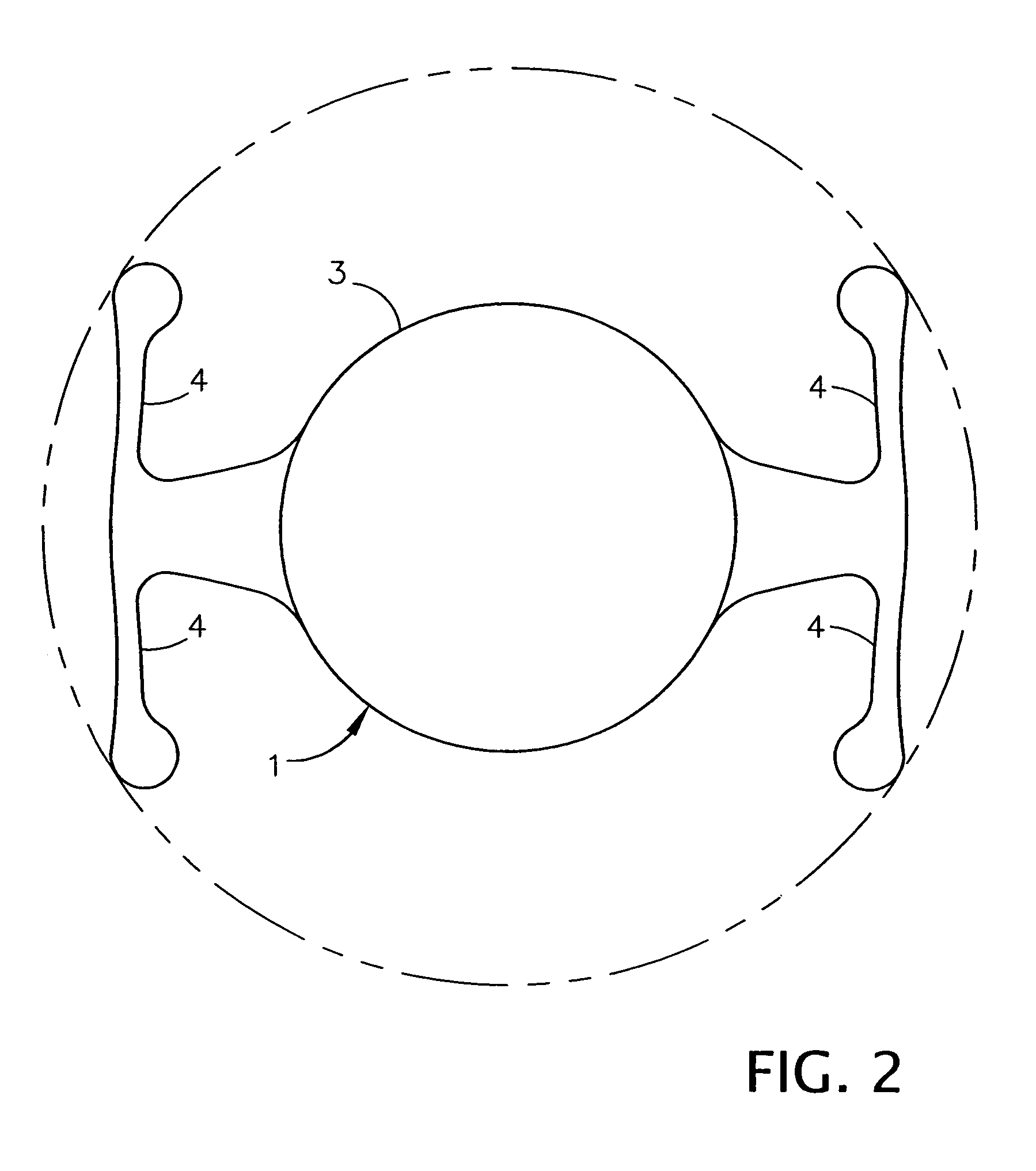Accommodative intraocular lens system
a technology of intraocular lens and iol, which is applied in the field of intraocular lens, can solve the problems of deteriorating vision, difficult implanting, and flattening of natural lenses, and achieve the effect of convenient implanting
- Summary
- Abstract
- Description
- Claims
- Application Information
AI Technical Summary
Benefits of technology
Problems solved by technology
Method used
Image
Examples
Embodiment Construction
[0030]As best seen in FIG. 1, the present invention comprises two lens assemblies, fixed lens assembly 1 positioned in the anterior chamber of an eye and moving lens assembly 2, which is positioned in an evacuated capsule C of the eye. Fixed lens assembly 1 comprises fixed lens 3 secured by two or more haptics 4. FIG. 2 shows a top view of fixed lens assembly 1. Lens assemblies 1 and 2 and lenses 3 and 70 may be made from any suitable material such as a thermoplastic, a silicone, a hydrogel or a soft acrylic and contain any desired additives, such as ultraviolet or blue light blocking chromophores. Lenses 3 and 70 may have any suitable design, such aspheric, toric, pseudoaccommodative or multifocal. Those skilled in the art will recognize that lens assemblies 1 and 2 need not be implanted at the same time. For example, lens assembly 2 may be implanted in an eye and the eye allowed to recover from the surgical trauma. After waiting such a healing period, bioptric and other physiologi...
PUM
 Login to View More
Login to View More Abstract
Description
Claims
Application Information
 Login to View More
Login to View More - R&D
- Intellectual Property
- Life Sciences
- Materials
- Tech Scout
- Unparalleled Data Quality
- Higher Quality Content
- 60% Fewer Hallucinations
Browse by: Latest US Patents, China's latest patents, Technical Efficacy Thesaurus, Application Domain, Technology Topic, Popular Technical Reports.
© 2025 PatSnap. All rights reserved.Legal|Privacy policy|Modern Slavery Act Transparency Statement|Sitemap|About US| Contact US: help@patsnap.com



